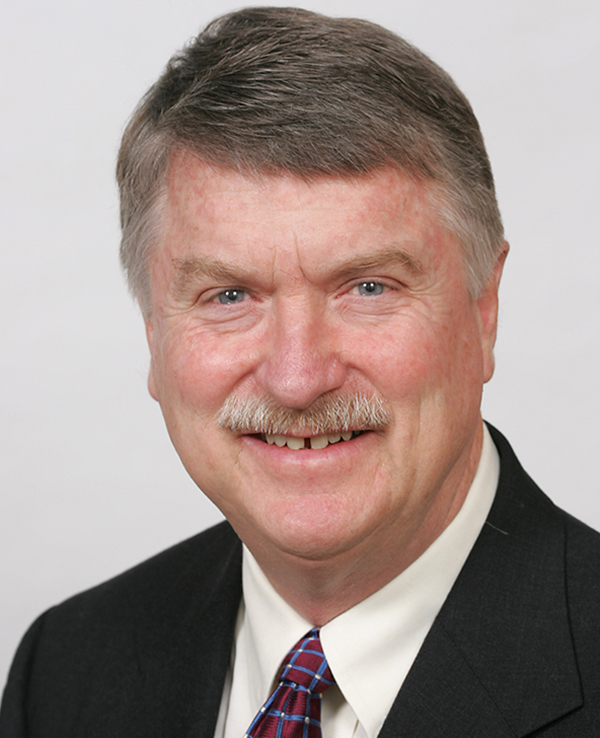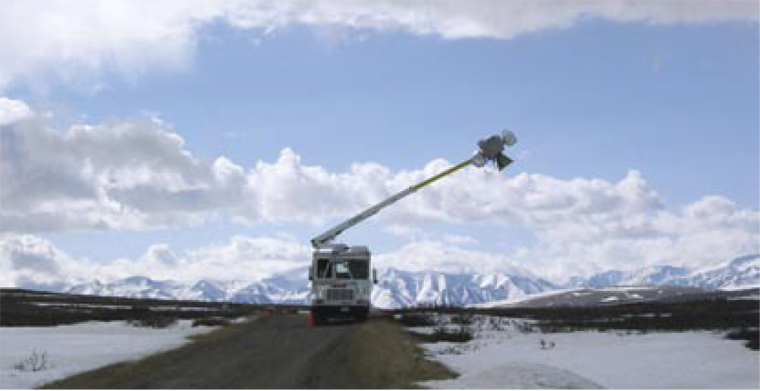Tony England: From space to Earth and back
“All science and engineering is a physical experience,” said England. “It’s an adventure.”

 Enlarge
Enlarge
If you watched the film Apollo 13, you have already seen Professor Tony England at work. England was the real-life NASA astronaut who wrote the procedure to build the CO2 scrubber that enabled the astronauts to return safely to Earth. For their extraordinary work, England and the rest of the team received the President’s Medal of Freedom in 1970-the same year England received his Ph.D. in Geophysics from the Massachusetts Institute of Technology (MIT). While Tony’s opportunity to fly to the Moon was lost when Apollos 18 through 20 were cancelled, he did fly on Space Shuttle Challenger in the summer of 1985. His mission focused upon solar astronomy and plasma physics.
Today, England heads U-M’s Microwave Geophysics Group, which does geophysical remote sensing. His research interests have included: ground probing radar; radar studies of temperate and polar glaciers in Alaska and Antarctica; and microwave studies of snow, ice, freezing soils, and planetary regoliths (layers of dust usually caused by meteor impact). His current research concerns the use of satellite microwave brightness as feedback for temporal models of land surface hydrology. England’s group generates land-surface models to illustrate the processes that are occurring in the soil, vegetation, or snow. The information contained in these models is then used by others to generate weather and climate models, which may ultimately predict patterns of global warming.
“Our group is one of the first to start generating land-surface process models that can be linked to satellite observations,” England says. “We also make the field instruments needed to calibrate and validate the models. The cost of having these instruments designed and built by industry is prohibitive, and, by incorporating new technology ourselves, we are able to build better instruments than have been built before.” England’s research group has built a set of instruments for the University of Florida and is now building a set for Iowa State University.
England recalls that the first instrument he used back in the ‘70s, an L-band radiometer (1.4 GHz), was the engineering prototype for an instrument that flew on Skylab. England says, “Radiometers back then were very large, close to 200 pounds, but now the entire receiver fits in the palm of my hand.”
“Back in the 1970s we began to understand that the earth sciences were linked together,” England says. “You couldn’t understand global climate-and the human effect on climate-without considering the atmosphere, the ocean, and the water cycle because they were all interrelated.” Yet England saw that hydrologists did not look at the water cycle in a global perspective, and he realized it was because they did not have the tools to do so. “If they had the tools to monitor the water cycle with a sensor, for example, then they could think more globally,” England explains.
England has long been interested in issues of hydrology, and in the 1970’s, when he was part of the US Geological Survey, he made his first trip to Alaska. Now, after 30 years of honing his instruments and techniques with remote sensing of the soil and
vegetation in places like Michigan, North and South Dakota, and Oklahoma, England is back to focusing his attention on the arctic. Such work will improve our overall grasp of the hydrologic cycle and aid in determining whether the changes observed over the past century are part of the natural variability of the system or an indication of a changing climate.
“Not only is the arctic a more sensitive place, because it’s near the freezing or melting point, but global climate models often show that the arctic is where the warming would be the strongest, and where it will be most evident,” says Ed Kim, former Ph.D. student of Tony England, who is now with NASA Goddard Space Flight Center, Microwave Sensors & Hydrological Sciences Branches. Ed is continuing much of the same type of work he did at Michigan, microwave remote sensing, designing new microwave instruments, building prototypes, using them in field experiments, and analyzing the data from experiments.

 Enlarge
Enlarge
England worked with two other graduate students doing research in land-surface sensing, and both have landed in non-EECS departments. He explains, “It has often been the way that technology moves on the feet of people that know the technology. As the technology matures, it moves to the application side, and that’s what’s happening with remote sensing hydrology. With my group, we’re advancing the technology of radiometry, but we’re also developing the applications so that the technology has importance to agriculture and hydrology, and civil and environmental engineering. As a consequence, many of the people being trained in groups like mine are finding faculty positions in the applications departments.”
One of his students, Jasmeet Judge, is now an assistant professor at the University of Florida in the department of Agricultural and Biological Engineering. Another, Brian Hornbuckle, is assistant professor in the departments of Agronomy, and Electrical and Computer Engineering. Both are continuing the work of microwave remote sensing with highly interdisciplinary groups, and have high regard not only for their training under England, but also for his patient and compassionate mentoring.
Judge says, “I really appreciate Tony’s tailored mentoring style. He tries to understand the person and see what that person really needs. He doesn’t push people. Michigan attracts high-quality students, and this method is very good for them.” Judge plans to pass on the excellent mentoring received from England by starting a mentoring program of her own. She said, “I’ve now realized that a student/faculty mentoring relationship is lifelong.”
Hornbuckle said “Tony is a pure gentleman. One of the biggest impacts he’s had on my career is that he does things the right way – he’s always thinking of the other person, and is very accommodating. He has such high integrity and he won’t compromise on things that matter.
England combines his love for science, his experiences at NASA, and his concern for teaching, with area K-12 children. He has given hundreds of speeches to school children about careers in science and education. “My message,” says England, “is that science and engineering can be exciting, and that research universities even offer opportunities for students to work on instruments that could fly into space. They begin to see the university as a place to do things and experience things and not just as a place to go to read books. All science and engineering is a physical experience. It’s an adventure.”
Most recently, England has agreed to serve in the capacity of Associate Dean of Academic Affairs for the College of Engineering. Administrative life is not new to him, having already served as an Associate Dean at the Rackham Graduate School. “I’m finding the work in the College fascinating. You always hope you can make things better.”
“All science and engineering is a physical experience. It’s an adventure.”
Space will be the next frontier for microwave remote sensing. In fact, NASA is currently building a new satellite called Hydros to be launched in 2011. European Space Agency (ESA) hopes to be first with such a system, their Soil Moisture Ocean Salinity (SMOS) mission to be launched in 2007. England and fellow researchers helped lay the groundwork for such a remote-sensing satellite systems several years ago through a project called HYDROSTAR, for which he was principal investigator. Through this project, England worked with others to coalesce the community of remote sensing researchers and the hydrologists, bringing him full circle with his life’s work of bringing together all of the Earth Sciences, and bringing the future of his work back in space.
 MENU
MENU 
